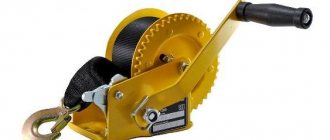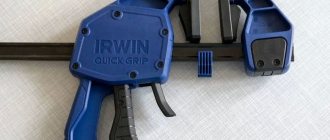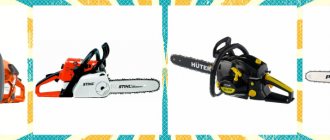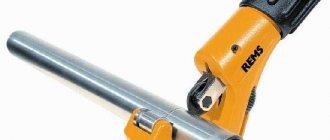Hi all. Today I have prepared for you a ranking of the seven best electric and manual lever winches of 2022. Everyone knows that a winch is an indispensable assistant for an off-road motorist, and it is also necessary during construction or repairs when it is necessary to lift, hold or move a load. I have chosen for you only high-quality models that really deserve your attention. The criteria for evaluating traction mechanisms in the rating were technical characteristics, as well as expert opinions and reviews from the Internet audience.
Lever hoists
Lever hoists are used for lifting, traction and slinging of various types of cargo. It can be used to work with light loads - 0.5 or 1 t, as well as for carrying out fairly heavy work. The structure is made of stamped steel. They offer to buy a manual lever hoist to optimize work carried out at temperatures from -20 to +40°C in an open area and indoors.
Advantages:
- light weight;
- compactness;
- strength.
| Load capacity, t | Traction force, N | Lifting height, m | Number of load chains | Load chain dimensions | Construction height, mm | Weight, net kg |
| 0,5 | 350,0 | 3-6-12 | 1 | 5*15 | 310 | 5,5-7,5-11,5 |
| 0,8 | 250,0 | 3-6-12 | 1 | 5,6*17 | 310 | 6,9-9,5-15,6 |
| 1,0 | 310,0 | 3-6-12 | 1 | 6*18 | 320 | 8,1-10,7-14,9 |
| 1,5 | 310,0 | 3-6-12 | 1 | 7*21 | 385 | 9,5-1,3-17,9 |
| 3,0 | 410,0 | 3-6-12 | 1 | 10*30 | 460 | 20-24-34 |
| 6,0 | 420,0 | 3-6 | 2 | 10*30 | 600 | 28,1-40,3 |
Manual worm hoists, stationary, manufactured in Russia
Stationary manual worm hoists are designed for lifting loads in a vertical plane.
invites you to purchase TRChS manual chain hoists in St. Petersburg at the best price.
| G/p,t | height , m | Dimensions, mm HxLxB | Chains used: Load Traction (high strength) (normal strength) | Lifting traction force, kg | Weight, kg | |
| 1,0 | 3,0 | 450x270x180 | 1-6x19 | 1-N-6x19 | 35 | 19-46 |
| 3,2 | 6,0 | 830x300x280 | 1-В-9х27 | 65 | 51-96 | |
| 5,0 | 9,0 | 950x350x360 | 1-В-9х27 | 75 | 82-128 | |
| 8,0 | 12,0 | 1200x440x460 | 8-10x30 | 75 | 186-243 | |
Mobile hand worm hoists
The TRChP hoist is designed not only for lifting a load vertically, but also for moving it in horizontal planes, if such a need arises during construction or installation work. It is allowed to operate a mobile worm hoist in open areas and indoors.
| G/p,t | Height rise, m | Dimensions, mm HxLxB(hxb | Radius rounding, m | Chains used: Load Traction (high strength) (standard strength) | Traction force rise /movement, kg | Weight, kg | Monorail path (No. I-beam beams) | |
| 1,0 | 3,0 | 450x270x180(10×10) | 1,2 | 1-6x19 | 1-N-6x19 | 35/10 | 33-73 | 16-18/(24M-36-M) |
| 3,2 | 6,0 | 830x300x280(12×12) | 2,0 | 1-В-9х27 | 65/18 | 66-125 | 22-45/(24M-45M) | |
| 5,0 | 9,0 | 950x350x360(16×16) | 2,5 | 1-В-9х27 | 75/20 | 128-188 | 30-55/(30M-45M) | |
| 8,0 | 12,0 | 1200x440x460(16×12) | 3,0 | 8-10x30 | 75/25 | 278-350 | 45M | |
Why is it worth buying a manual hoist from Progressive North-West?
If it is difficult for you to independently choose a work hoist with optimal load-carrying characteristics, our specialists will be happy to help you cope with this task. When you decide on your choice, all that remains is to buy a hoist.
does everything to make the purchase of equipment as convenient as possible for the client. The price and quality of the offered goods are in an optimal ratio. We cooperate with specialized carrier companies. You can familiarize yourself with their prices in the corresponding section of the site and estimate the costs of purchasing a hoist by summing up the cost of the hoist itself.
Simple moves
These winches are completely manual...
Text: Evgeny Konstantinov Photo: Andrey Khorkov, Alexander Davidyuk, Irina Koroleva
The powerful winch on the bumper is relaxing. In most cases, it allows you to drive without turning your head on and without dismantling the road. I splashed into the liquid “over the glass”, unwound the cable, pressed the button and continued... But sooner or later there comes a moment when the electricity runs out. Or the winding burns out. Or the shaft bursts. And then it’s time for simple movements: pushing, digging, sawing, lifting, jacking, launching signal flares, or, at worst, hitting pears. What a gift of fate at this moment the hand winch dug up somewhere at the bottom of the trunk seems like! But will the lucky find cope with the mission entrusted to it?
The less prepared the SUV, the more important it is to have a manual winch. And if for a trophy monster it is nothing more than a saving straw), then for a standard car it is practically the only tool for overcoming an obviously “ambush” area. Well, or evacuation from it. It’s not for nothing that this “tool” is snapped up with particular activity in the spring by our fellow citizens: the summer season is approaching, and the road to the village... has become even worse. Summer residents buy hand winches not only for SUVs. Well, tell me, what other off-road attribute is so easy to save a Zhiguli? Yes, and such a thing is useful on the farm: straighten a fence, and stretch a clothesline across a site... It’s not for nothing that in just one week in March, market prices for hand winches have increased noticeably, and their choice from sellers and warehouses, on the contrary, has decreased. According to traders at the car market in the South Port, winches sell best at this time of year - buyers sweep away everything indiscriminately.
| "Sputnik" (500 kg). Russia. 3500 rub. |
| Jun Kaung 4ton Cable Puller (4t). Taiwan. 1500 rub. |
| Jun Kaung 2ton Web Hand Puller (2t). Taiwan. 850 rub. |
| 4ton Hand Puller (4t).China. 550 rub. |
| “Sorokiinstrument” (3t). Russia-USA. 1499 rub. |
| No packaging |
| LR-1.6 (1600 kg). Russia. 4050 rub. |
| MTTM-1.6 (1600 kg). Russia. 5640 rub. |
Natural selection
A survey of retail outlets showed that the vast majority of hand winches in markets are of Chinese and (to a lesser extent) Taiwanese origin. Russian products are poorly represented: mainly construction hoists and gear lifting mechanisms, which are not particularly convenient for pulling out a machine. But in specialized companies dealing with construction equipment, we came across very interesting domestic specimens.
The criteria for selecting applicants are as simple as possible: ease of use with the car, a declared traction force of at least a ton and a price of no more than 6,000 rubles (for a large sum, an off-road driving enthusiast can purchase a used electric winch, but a summer resident will simply be strangled by a toad). We made the only exception for the Sputnik winch from the Moscow plant named after Chernyshev. Despite the rated load of only 500 kgf, it looks very decently made, with plenty to spare. And most importantly, this is the only winch designed to pull a car out in an open field - it has its own anchor.
The bestseller on the Moscow markets this spring is the Taiwanese Jun Kaung automobile winch with a lifting capacity of 4 tons (achieved through a standard unit). A two-ton lever winch is also sold under the same brand, where a fabric sling is used instead of a cable. Judging by the description, this mechanism is intended both for securing cargo and for pulling out the car.
Of the nameless Chinese winches, at first I thought of choosing the cheapest one - for 250 rubles, especially since the seller promised two tons of traction! Having looked closely, I actually found a sticker with the numbers 2000. But not kilograms, but newtons. Innocent deception, some 10 times. Therefore, the choice fell on a more expensive and robust-looking “device”, with a declared thrust of 4000 kgf.
Without hesitation, we included among the test subjects a three-ton winch of the famous Sorokinstrument brand. According to the sellers of the company store, this winch was developed by their own designers and manufactured in the USA.
The most powerful and extremely simple of the lever winches of traditional design seemed to us to be the construction LR-1.6 produced by Enerpred-Gidravlik CJSC. But the MT railway hauling winch is even heavier and more expensive. By the way, the latest device is notable for its mysterious operating principle and the “infinite” length of the cable used.
Alas, none of the winches that required turning the handle worked for us. Some models require rigid support, others are too weak, and others are expensive and bulky. Thus, we will pump the pen of all subjects. Here it is, a penchant for simple movements...
Physical education lessons
How to "land" a Wrangler in the snow? Easily! The car drives off the asphalt, rolls over the parapet - and that’s it, ready. We can begin. The difference with the real situation is this: we will not pull the car onto a flat road, but, on the contrary, we will try to drag it further into the virgin snow. It’s more clear...
4-ton Hand Puller. Due to the inconvenient drum lock and the sharp edges of the housing, in order to unwind the cable, you must, with precise aim, hit the drum lock with the handle lock and disengage it. It is only important to correctly dose the force on the handle and pull evenly. Everything works out easily even alone. Only the cable is too short, you will have to carry an extension cord with you. You can, of course, remove the block and increase the length of the cable, but then the gear ratio will completely drop. Moreover, this is not easy: you need to unscrew the cable holder, unscrew the block axle and rearrange the hook.
We begin to tighten... A few simple movements, the cable rings like a string, the machine moves centimeter by centimeter, and the pulley turns parallel to the ground. And then the flimsy guide for the cable was distorted by the same cable. The result is that the cable began to wrap around one side of the drum and get caught on the teeth, interfering with work...
Jun Kaung, tape.
After pushing the Jeep forward slightly, we brought the Taiwanese belt winch onto the field. Externally, I liked it because of its neat manufacturing and convenient latches. True, it turned out that the entire tape does not fit onto the drum and therefore the working stroke is still only a meter and a quarter. But by pulling the tail out of the drum more or less before applying the load, there is no need to precisely adjust the size of the extension cord. Along the way, an unpleasant property was discovered: if you wind the tape tightly until it stops, it is pinched by the winch body. After this it is possible to pull it out with great difficulty. And while working, it seemed to me that the tape was stretching stronger than the steel cable, and therefore the speed of work was less and the force was greater. With every movement of the handle it grows. On the last turns, it turned out that the tape was not wound very smoothly and tended to slide to one edge, getting caught in the teeth. Additionally, unwinding the tape under load proved more difficult than first thought and required two people to operate it safely.
"Forty Instrument".
This winch is the most versatile when it comes to working with a block. It has two hooks on the cable, one of which is attached to the block, and the second is hooked to the frame. Once you unhook it, you can work at its full length. That's what I did. Pumping the handle became noticeably more difficult than in previous cases. But from the outside, the work looked more fun. The winch cable quickly picked up the slack in the rope extension and cheerfully pulled the Wrangler towards a lonely birch tree. Having wound more than half of the cable, I got tired and handed over the matter to my comrades. To be honest, even before starting work, I had doubts about the American origin of this winch. It is very similar in body and many details to the Taiwanese “four-ton”, only less carefully made. And the plastic of the handle turned out to be completely identical to the “tape” one. True, Sorokin distinguished itself with the most complex locking mechanism. They just don’t work easily and clearly enough. Americans don't do that. Although, if for export and from waste, and even for pennies... When, during work, I noticed an unclear hit of the teeth and a distortion of the drum, my doubts only intensified.
Jun Kaung, cable.
The four-ton Jun Kaung is the most well made of the imported products. The quality is visible even in the smallest details: it has the most pleasant-to-touch rubberized handle, a very well-attached cable to the drum, simple and not tight latches. True, in order to use the device without a block, you need to spend time: unscrew the bolt on the body, unscrew the hook and rearrange it. Therefore, we will work through the block. Clarity and ease of operation are excellent here; as expected, little effort is required. The only thing that irritates me is that for some reason the two branches of the cable going to the block keep twisting together. Their friction against each other noticeably increases the resistance to work, so you have to rotate the winch every now and then around the longitudinal axis.
"Satellite".
Despite the low declared load capacity, the winch looks much stronger than the previous ones. The only annoying thing is that the thickly oiled cable (the only one of all that is not galvanized) tries to dirty everything. The absence of a hook or at least a bracket on the body also raises the question: the winch cannot be hooked onto, say, a tree. You can only screw it into the ground. And this is not convenient or possible in every situation. On the other hand, none of the competitors will be able to work at all in an open field. Another positive point is the long cable, which allows you to choose the “fulcrum point” quite freely. And so I place the winch drill in the first available place in front of the car and begin to screw it into the snow. He gets in there easily, right up to the drum. But as soon as I start to pull, the winch comes out. What to do? Wait for the heat to screw into the ground. Or improve the design yourself.
LR-1.6.
Metal was clearly not spared here, and the extendable handle with a comfortable rubber tip completely convinces of the omnipotence of this device. But its hook on the body is offset from the central axis, so in any position other than the correct one, the system begins to warp under load. And with a sufficiently large load, the winch generally jams because of this, and so seriously that it becomes difficult to simply loosen the cable. In general, the LR-1.6 works as it should only if it is turned on its side and the cable with the hook on the body forms a straight line, strictly parallel to the sides of the drum. In this case, you will have to swing the handle in a horizontal plane.
MTTM 1.6. Russia.
We spent the longest time preparing MTTM for work. I even had to read the instructions! The difficulty was to correctly thread the cable into the winch. This action required so much physical strength, and most importantly dexterity, that no one wanted to do it a second time, and it was decided from now on to carry the device only in assembled form. This made loading it into the trunk completely inconvenient, and I no longer wanted to carry it in my hands from the car to the tree. But when everything was hooked and I started pumping the handle, everything magically changed. The winch worked, and how! She pulled the Wrangler easily and at the same time quickly, breaking the strong April crust with it. By the way, unlike other lever winches, MTTM does not have an idle handle. Movement in any direction causes the cable to stretch, and this significantly increases the speed of work. The mechanism turned out to be the most convenient for smoothly lowering the load. It is enough to move the handle from the side to the upper lever - and now the cable obediently goes in the other direction.
Searching for the limit
The instructions for "short" winches stated that they should not be used for lifting loads. Plus, in all cases it was expressly forbidden to extend the handle with improvised objects. But, firstly, who will observe such prohibitions when it is “locked down”? And secondly, we need to understand what violating the above commandments can actually lead to.
For imported products, the specialists of the Dmitrov Automotive Test Site, where we turned, came up with this method. A dynamometer is attached to the raised forks of the loader, the cable of the winch being tested is attached to it, and the winch itself is attached to concrete cubes standing on the floor. To test each of the mechanisms as a whole and at the same time reduce the overall length, we loaded winches equipped with a block through this same block, and therefore developed maximum traction on the hook. If we had done without the block, then with the same load on the handle, the pull on the hook would have been only half the value obtained.
The “four-ton Chinese” reached only 1200 kgf, after which its handle bent. When the load was removed, it turned out that the drum had also bent, and the entire winch was warped. The tape system turned out to be stronger. Up to 1500 kgf the load grew evenly, and then over the course of several strokes of the handle it “floated” in the range of 1750–1500. Something was dragging on. Finally, the handle was irreversibly bent, and the tape showed obvious signs of abrasion and stretching. “Sorokiinstrument” quickly got down to business, but very quickly its mechanism began to warp. In this form, the winch worked up to 2250 kgf (after which the teeth could not withstand the load, and they were “licked off”). Only the cable Jun Kaung was able to lift the blocks. Its mechanism worked without distortion, and after removal I did not find any traces of deformation.
the Forbidden fruit
Now I'll take a break and think about the prohibitions. Obviously, the “do not lift” requirement is for safety reasons. Due to the very short winch handles, the lifter ends up too close to the load. If something comes off, it could inadvertently crush you. If you hang the winch at the top, then the question arises of how to get to it and take a stable position there. Well, if you anchor the winch horizontally and lower the cable down, it will begin to rub against the guides. Therefore, another block is required. In general, winches can be lifted, but they must be used wisely for this purpose.
Now about lengthening the handle. When lifting the load, we specially used a three-meter pipe so that at the decisive moment we would be away from the falling blocks. Plus, with its help, we were guaranteed to reach the maximum strength of the mechanism. Although, for example, in the case of the Chinese winch, there was no need for an extension cord. Its handle bent on the first turn of the cable when only 32 kgf was applied.
In the meantime, a new technique was invented: we began to pull together two motionless objects. One was a huge concrete monolith, the other was two (!) ZIL-131s linked to each other and slowed down in every imaginable way. And so that the “strong man”, trying to confirm the declared 4000 kgf, does not break the three-ton dynamometer, a double “reverse” pulley was included in the system. In general, in order not to confuse readers at all, I will present the resulting load with an amendment. So, working with a Taiwanese four-ton truck without an extension, I was able to develop 1800 kgf. Then the pipe came into play. At a load of 3800 kgf, a powerful blow was heard and the cable fell off. It turned out that the teeth could not stand it.
I began to deal with LR-1.6 gradually. First I developed 900 kgf on the short handle, then I extended the standard extension and almost doubled the result on the hook. Using a pipe, I pressed it to 2600 kgf. As a result, the base of the handle bent and the cable broke, but overall the winch remained working. As for Sputnik and MTTM, they didn’t even require a pipe. Having hooked the “anchor” winch, modernized after a failure in the snow, to a new bracket, I gave in to the persistent requests of the fragile girl photographer and exchanged working tools with her. And what do you think? Having pumped up 1100 kgf, she, after a little rest, pressed up to 1400 kgf and... broke the cable. Apart from this, the winch remained in perfect condition. But the MTTM mechanism is apparently specially protected by a special kind of fuse. When reaching 2200 kgf (without using a pipe), one of the two rivets holding the lifting handle to the axle broke.
Bottom line
So which winch should you choose? Again we don't have a 100% winner. If we talk about imported products of the same type, the best choice is undoubtedly the 4-ton Jun Kaung. Even though the “Taiwanese” did not reach its rated data by 200 kgf, it is still the leader in terms of maximum traction, transmission ratio, and cable length. With its competitors everything is simple. Cheap “China” is outright junk, “Sorokinstrument” is clearly inferior to the leader (at the same price), and it’s still better to leave the “variegated tape” for tightening the cargo on the trunk. Perhaps, for the owner of a passenger car who will not strive to overcome a long “ambush” on a winch, Jun Kaung is the most suitable option. But for real off-road use the cable is too short. To pass a difficult section of sufficient length (at least to get out of the swamp after the electric winch burned out), you will need to change gears very often. If you need to hook through another block, the effective working stroke will be completely reduced to several centimeters.
Russian winches, thanks to longer cables, are more suitable for off-road use. Especially MTTM, which can use an almost endless cable. But, I believe, not every off-road enthusiast (especially in a small car) will agree to carry such a bulky thing in the trunk. In addition, it is the most inconvenient in everything except... the work process. Its other, purely off-road, drawback is indicated in the instructions: the mechanism does not tolerate dirt getting inside. Because of this, the cable may slip in the clamps and accelerated wear of the working surfaces. And even if the winch does not accidentally fall into the mud bath, the dirty cable will certainly drag enough natural abrasive and moisture inside...
Personally, I would probably opt for the LR-1.6 if it did not require such strict orientation in space. Unfortunately, in the forest it is not always possible to place the winch in the required manner, and even at a height convenient for use. If the tensioned cable ends up at ground level (this is usually the case), then the LR-1.6 will be completely useless. Perhaps the situation will be corrected by a specially made guide and a modified hook fastening on the body, but such an upgrade will require a lot of work and subsequent testing.
After much thought, I still recognized the Sputnik we modernized as the most practical of the winches. If in the factory version it turned out to be an outsider due to its helplessness in many off-road scrapes, then with an additional ring this mechanism, it seems to me, is capable of working wonders. Moreover, once screwed into the ground, the anchor should begin to work as it should. If you also replace the cable with a thicker and galvanized one, then you will get a Thing (I am sure that the traction potential of the mechanism is much higher than the 1400 kgf at which the standard cable broke). I approached the Chernyshev plant with these rationalization proposals, but it turned out that no one needed them (my rationalization proposals) at the moment - due to the sharp rise in metal prices, the production of winches had just been discontinued for an indefinite period. And what is in the warehouse will be sold anyway. This is the quinoa grass...
| Technical characteristics of hand winches (ORD measurements) | |||||||
| Model (country of origin) | LR-1.6 (Russia) | "Sputnik" (Russia) | 4ton puller (China) | "Sorokiinstrument" (Russia-USA) | Jun Kaung 4ton (Taiwan) | Jun Kaung 2ton Tape (Taiwan) | MTTM 1.6 (Russia) |
| Declared traction force, kgf | 1600 | 500 | 4000 (via standard unit) | 3000 (via standard unit) | 4000 (via standard unit) | 2000 | 1600 |
| Achieved traction force, kgf | 2600 | 1400 | 1200 (via standard unit) | 2250 (via standard unit) | 3800(via standard unit) | 1750 | 2200 |
| Winch weight, kg | 11,0 | 8,3 | 3,5 | 6,3 | 6,4 | 3,0 | 30,2 |
| Cable diameter, mm | 8,5 | 5,0 | 5,0 | 5,8 | 6,0 | 27 x 2.2 (tape) | 12,0 |
| Rope length, m | 8,7 | 11,5 | 2,5 | 2,9 | 3,3 | 6,1 | 12,0 |
| Distance between hooks, m | 0,5-9,0 | 0,25-11,6 | 4000 (via standard unit) | 0.6 – 1.9 (3.2 without block) | 0.65 – 2.05 (3.55 without block) | 0,35-3,35 | 1-12 |
| Working stroke, m | 8,45 | 11,35 | 1.16 (2.26 without block) | 1.3 (2.6 without block) | 1.4 (2.9 without block) | 1,25 | 11 |
| Handle length, mm | 750-1150 | 800 | 430 | 520 | 520 | 450 | 900-1280 |
| Gear ratio on the first layer | 1:31,60 – 1:49,66 | 1:47,77 | 1:37.53 (1:18.77 without block) | 1:39.17 (1:19.58 without block) | 1:43.72 (1:21.86 without block) | 1:38,10 | 1:40.63 (constant) |
| Gear ratio on the second layer | 1:22,84 – 1:35,89 | 1:36,23 | 1:30.10 (1:15.05 without block) | 1:31.54 (1:15.77 without block) | 1:31.54 (1:15.77 without block) | 1:34,48 | — |
| Gear ratio on the last layer | 1:11,86 – 1:18,64 | 1:13,89 | 1:25.12 (1:12.56 without block) | — (only two layers of cable on the drum) | 1:28.06 (1:14.03 without block) | 1:18,16 | — |
| Average retail price, rub. | 4050 | 3500 | 550 | 1499 | 1500 | 850 | 5640 |











